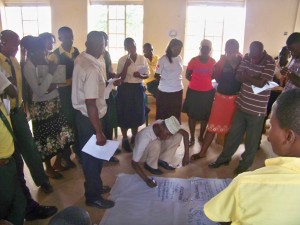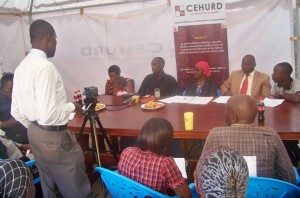By Prima Kwagala

A visit to a drug shop will shock you if you ask for a certain drug and the pharmacist in turn asks, “do you want the cheap duplicates from India or the original from Switzerland.” Question remains, who sets the price of medicines in Uganda? Why are there different kinds of medicines to cure one illness?
According to the medicines index in Uganda (National Drug Authority), 80% of medicines in Uganda are imported from countries like India, China, Germany and Switzerland with only 20% produced by local industries for the local population
Who should we hold accountable for drug prices? Why should a particular drug have two or several prices? The answer is simple. When someone or an industry invests in research of a particular disease and discovers a drug to cure it, a government gives them monopoly rights (Patents) to market the drug. These rights are meant to last 20 years according to international trade rules. This gives the product owner mandate to determine the price of the drug so as to recover the expenses they incurred in researching on the drug.
These rights are under what is termed as ‘intellectual property rights’. If not regulated, these rights are selfishly abused by the owners through setting very high prices at the expense of the poor populations who fail to raise funds for such essential medicines.
International trade rules have however been put in place by the World Trade Organization (WTO) to ensure that poor nations can benefit from the innovations of rich countries which have the resources to invest in research and development of drugs. An example of these rules came in 1994 as the World Trade Organization’s Trade Related Aspects of Intellectual Property (TRIPS) Agreement.’
This agreement was interpreted by a council of ministers meeting at DOHA in November 2001 [Doha Declaration (2001)] to the effect that the TRIPS Agreement ‘can and should be interpreted
and implemented in a manner supportive of WTO members’ right to protect public health and, in particular, to promote access to medicines for all.
As a result of this agreement and subsequent declaration at Doha, countries party to the World trade Organisation have put in place laws and policies to ensure access to medicines for all. This is because the agreement allowed developing countries to manipulate or make use of intellectual property rights of drug companies to build their capacity to produce drugs for their populations until 2004.
These flexibilities in the WTO -TRIPS Agreement have been beneficial because in 2000, the price of a first line drug of HIV/AIDS cost $12000 (at least UGX 30,000,000) per person per year. Due to our poor situation, people in Uganda considered HIV/AIDS a death sentence.
When the International trade rules came into place as interpreted by the council of ministers at DOHA in 2001, India put in place industries to reverse engineer these drugs and produced them at a much cheaper price. Today the price of first line drugs for HIV/AIDS is less than $67 (UGX. 167,500) per person per year!
The beauty of making proper use of the flexibility to copy versions of ‘brand name’ or ‘originator’ drugs to make ‘generic’ versions of the very same kinds of medicines is what is causing the differences in pricing of medicines. The ‘brand name’ or ‘originator’ drug is expensive because it is inclusive of research costs and the ‘generic’ or copy version from India is not fake but does not include research costs of the first innovator! Thus the difference in pricing
The government of Uganda needs to understand the dynamics of drug pricing by utilising all the flexibilities and to put in place a legal and policy frame work that promotes access to medicines. This is because progressive realization of the right to health entails that governments not only put in place structures for service provision, but also ensure that there is affordable, reliable and accessible services for the populace.
It is everyone’s right to claim access to medicines in Uganda.


